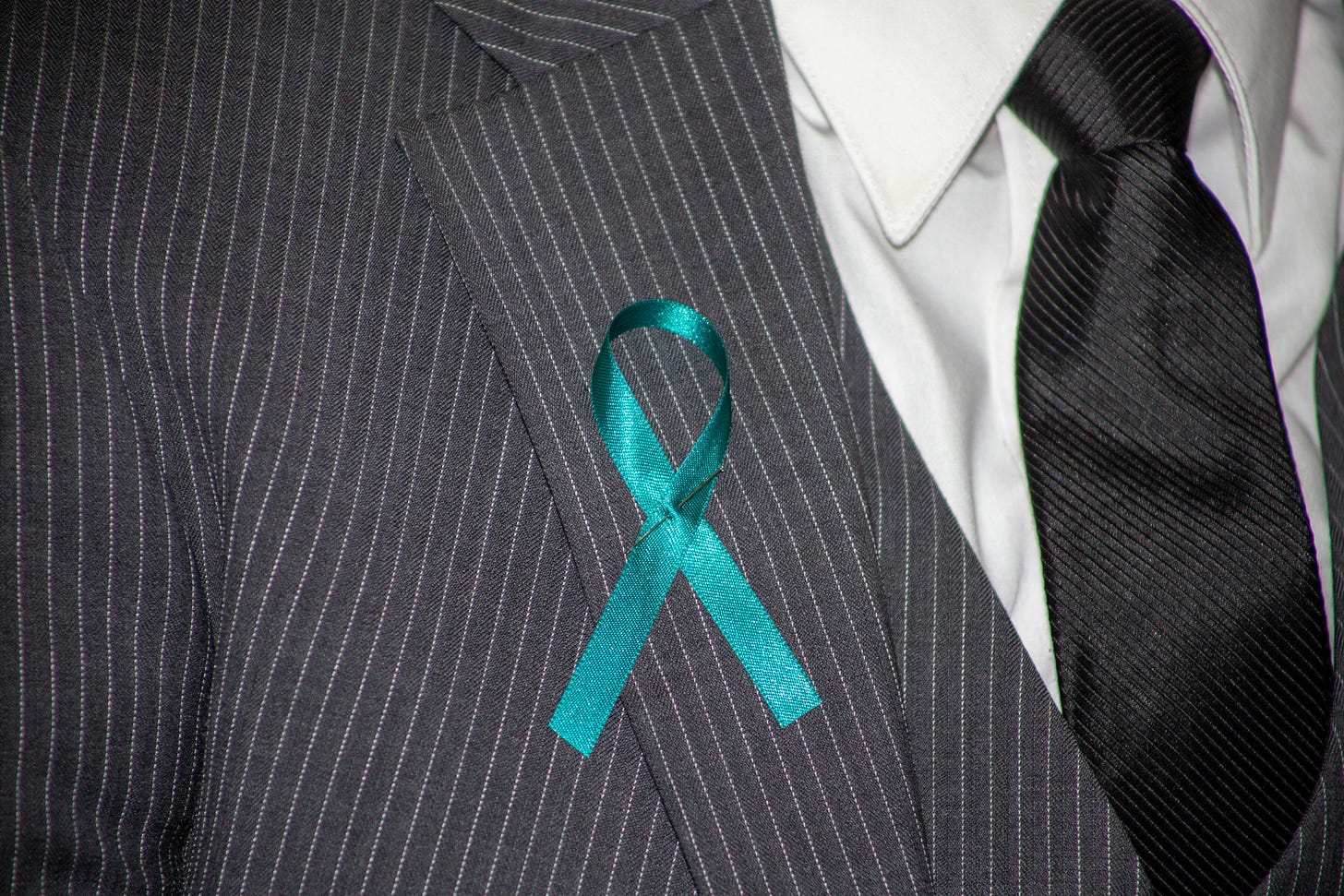Are you aware that more than 78% of those lacking awareness aren't aware of it?
How to work the 5 rings of Communication in building attention
We have lost awareness. According to studies1 most Americans are unaware.2 Even more concerning is that studies show that 78% of those lacking awareness aren't aware of it.3 Awareness Anonymous clinics nationwide are empty because of our lack of awareness about our lack of awareness.4 Every 11 seconds another person becomes unaware.5 The problem is epidemic.
Most don’t know, for instance, that January is not only National Hot Tea Awareness Month but also National Bath Safety Awareness Month.6 Few know that February is Heartworm Awareness Month, Termite Awareness Month and the National Pet Dental Health Awareness Month all at once. Every March wives remind their unaware husbands that it’s International Listening Awareness Month. The more-aware husbands respond that they’re busy observing Seagrass Awareness Month, also in March. People wonder why they are so anxious during April, but it might be because it is Stress Awareness Month, or perhaps because it is also Foot Health Awareness Month, and it’s just hard to know what to do to keep one’s feet healthy.
It’s hard to keep this all straight, which is why some have established February as National Awareness Awareness Month. Yes, you read that right. It is already April and I bet you went entirely unaware that you were to become more aware two months ago—that’s how bad this crisis is. In February we should have all been spreading awareness of awareness to solve our crisis of unawareness.
If we had done so perhaps the children of the world would have increased readiness to celebrate Garlic Mustard Awareness in May, and not only Goat Trauma Awareness but also Accordion Awareness in June; although hopefully not at the same party—as you no doubt are aware, goats hate accordion music. And after that what kid wouldn’t enjoy National Hot Dog Month in July (not to be confused with National Sausage Month in October).
Speaking of confusion, all this talk of awareness has me thinking about how hard it is to compete for the attention of those we want to communicate with, especially in the church.
Competing for Attention
Doesn’t it blow the mind to consider all the emphasis on awareness that is in our culture today? We can find a month or day or week of awareness for almost everything. And it’s true, none of those I mentioned above were made up; they’re all real to someone and celebrated (although I’m not sure exactly how) by some community somewhere. If you lead something, especially if you lead in the church, I’m guessing you have encountered the problem of communicating to those who already have information overload. How can we compete for attention in today’s culture?
I believe the most important stage in building awareness is often skipped over, and that is letting key people into the process early. Knowledge is power, and it can be a powerful thing to let people know what is happening early on. By “slow leaking” what is coming up, and even inviting push-back and mid-course correction from inner circles of people, you can start to build awareness among the most influential in the church. Whether our church is 40, or 400 or 4,000 people, there are those who hold sway over others. Think of it like a bulls-eye target with 5 rings that looks like this:
Here’s an explanation of the Five Rings of Communication to build awareness:
The inner ring includes the hand-picked primary catalysts that have been recruited to really lead everything. This is the core — and they may have known about this concept before the lead pastor even.
The next ring includes key positional leaders and those who should be “in the know” even if they don’t have key leadership of the thing you are doing. These people should know very early — even if it’s just a heads up.
The third ring includes all the leaders in the church. Somehow this group needs to be in the loop fairly early. Sometimes this group can know things many months ahead of time. Calculate this time well as you don’t want it to be too quick but also don’t want it to be so long that people forget it is coming. The key here is to ensure those who should hear before a large group so they know they are still in the inside loop. Think: who might be offended to not learn before the crowd?
The fourth ring includes those active in passing on the word. Sometimes its not the leaders who are the best at communicating information. It’s instead those people who are tempted to gossip. Who are the people in your church or sphere of influence who might be tempted to spread negative information, or who are the ones who are on social media, constantly sharing information, or who are the ones who stay after church each week to talk to people until the doors are locked? Why not harness their influence by giving them positive information early and let them start the communication out on the right foot. Again, information is power, and these people will feel much more empowered if you give them the information to spread early.
The fifth ring includes everyone else in the church. This is your basic promotion category people use marketing thinking on. We should be cautious to merely engage everyone as though they are the “everyone else” category. They will feel it. Just consider what it might be like for one of our board members, or a Sunday school teacher, to hear about this when it is announced three weeks beforehand on a Sunday morning?
The problem is that when we are trying to build awareness we skip right to ring 5 and communicate with everyone hoping they all get on board. Instead, we need to work the rings step by step, and not only will we build their awareness, they’ll help us build awareness with everyone else. This principle works beyond a local church, of course, as even national and international organizations should work a similar “ring by ring” approach to building awareness.
How about you? What strategies have you use to effectively spread awareness about something you care about, or within your organization or church? Leave a comment and let us know…
See McDibble, M.C., & Snorvak, L. (2020). "An Alarming Surge in Obliviousness: Correlation and Causation in Apathy." Journal of Turgid Awareness Studies, 27(4), 404–419; Cf. Wexler, T., McPhee, R., & Zang, H. (2021). "Awareness Deficiency Syndrome (ADS): A Palaverous Introduction." Prolix of Theoretical Forgetfulness, 13(1), 1–19.
Most are also unaware that all of the studies cited in the prior footnote, as well as all the other footnotes to this article (except for footnote 6) are not real and made up by this author to prove the point.
Ibid.
See Farnsworth, G.P. (2022). "The Empty Chairs: A Jejune Attempt Toward an Ethnography of Awareness Anonymous Meetings." Circumlocutory Reviews of Cognitive Deficiency, 9(2), 99–115.
It takes readers 11 seconds to click on this footnote and discover the truth of the claim. Thus no citation is required as it is proven ipso facto by the fact that you are reading this. You clicking on the footnote link is now a data-point in my future “research” to be published on this subject.
This footnote is just to say that all these awareness days and months are actually real, unlike the other footnotes above.





The footnotes are hilarious! Article was interesting… Rings of Communication very informative. Thanks!
This was fun to read (and rather hilarious); thank you
Reminds me of a time in the late ‘80s before phones. I’m sitting in a CIGNA underwriting class. Mike Gilmartin shares a paper note to me saying: “hey Omar, hope you’re enjoying this class. I was sitting here thinking…. Think of all the things that are going on right now that you’re just too stupid to wonder about!”
Hahaha.
Lots of truth in that funny stab. Am I wondering enough today? Who needs a touch point? A connection? I wonder a lot these days